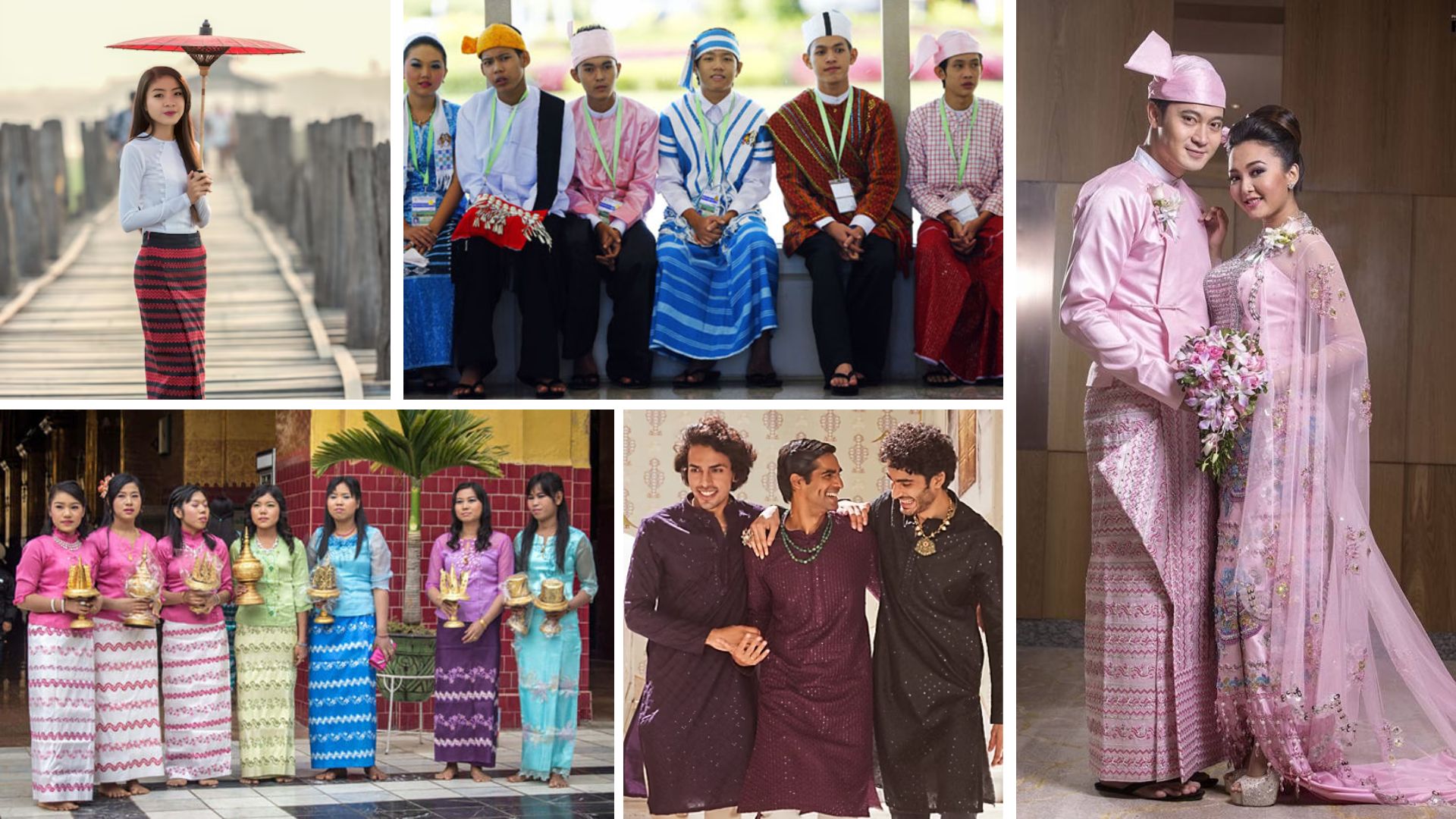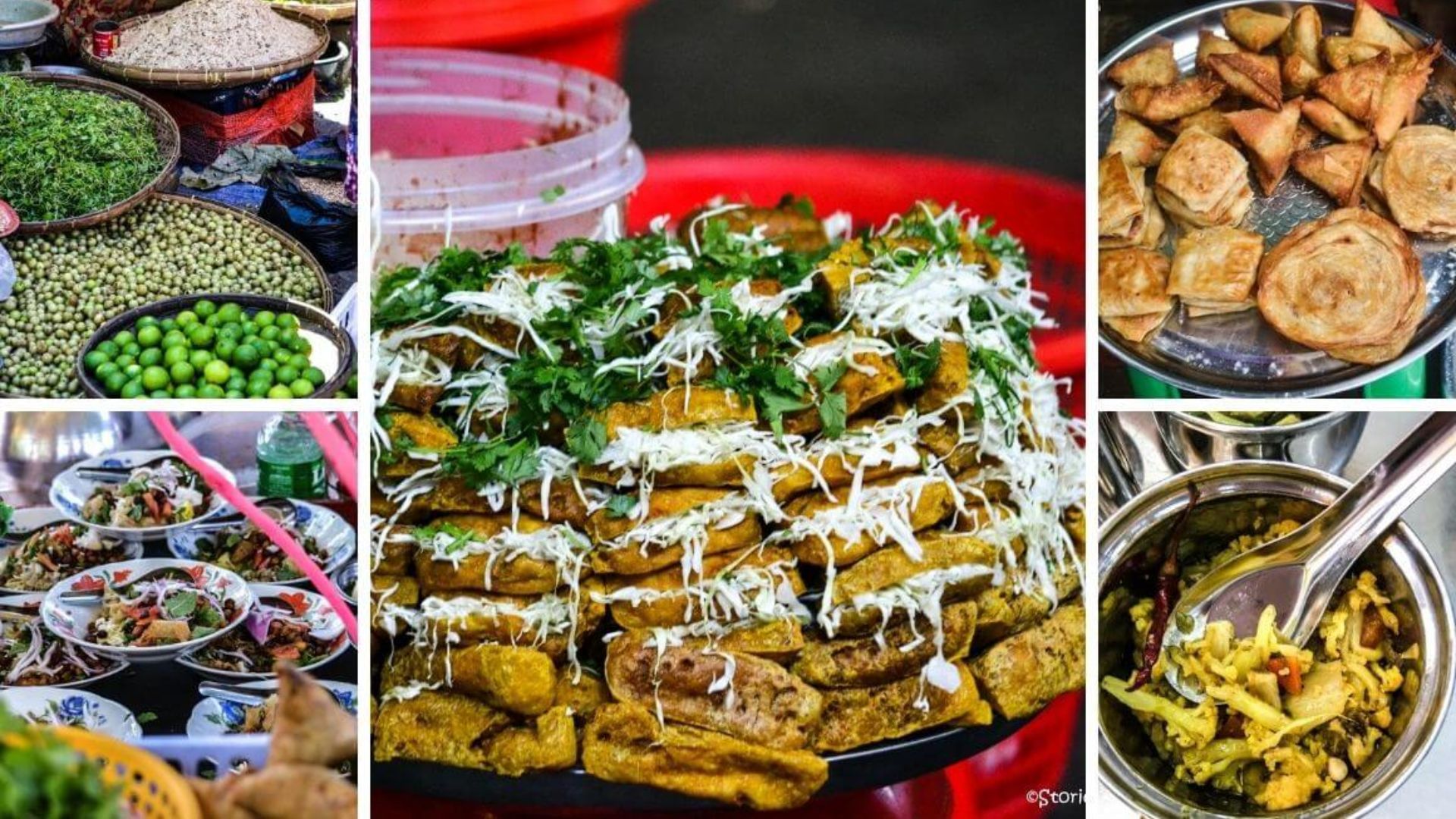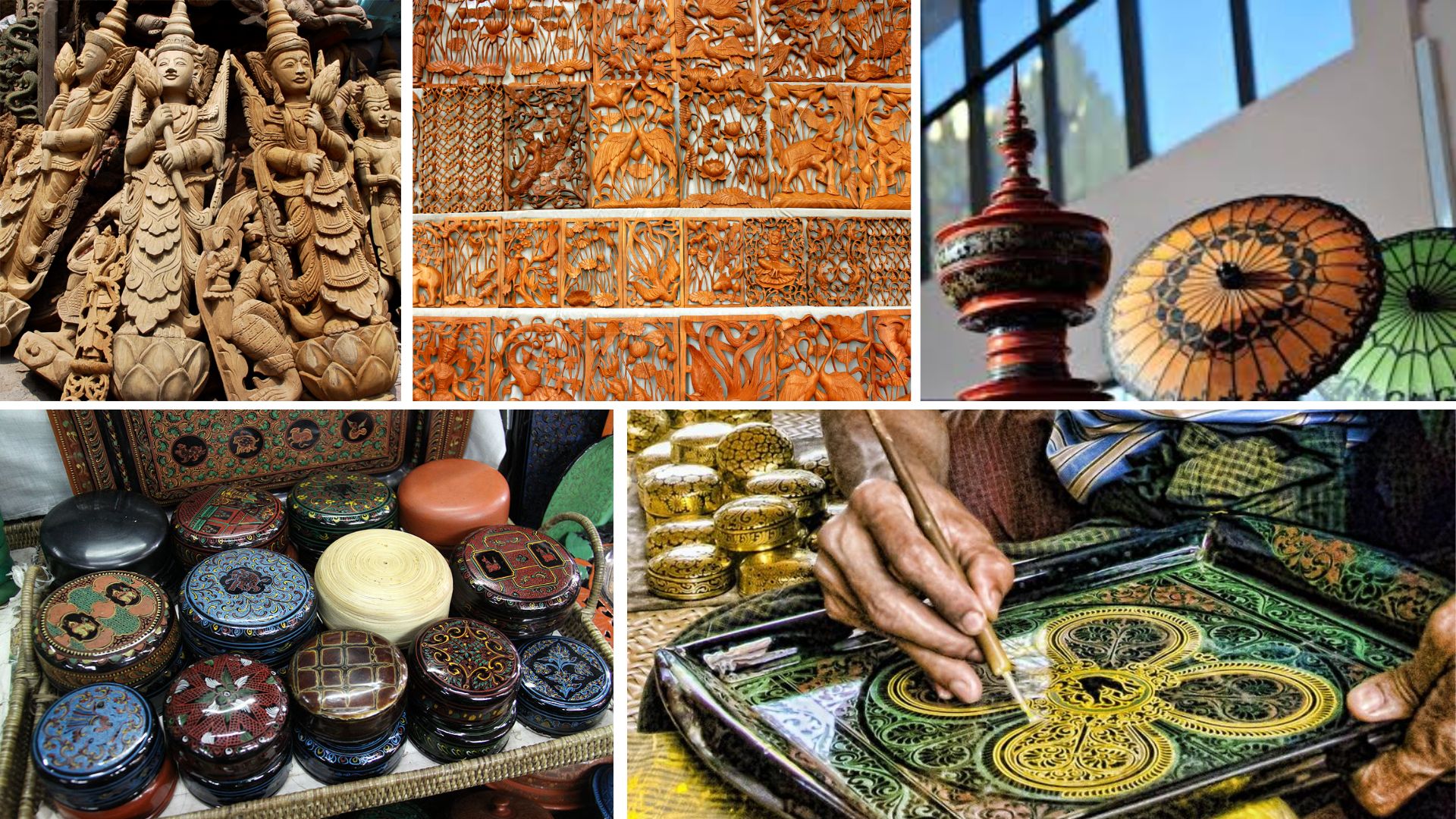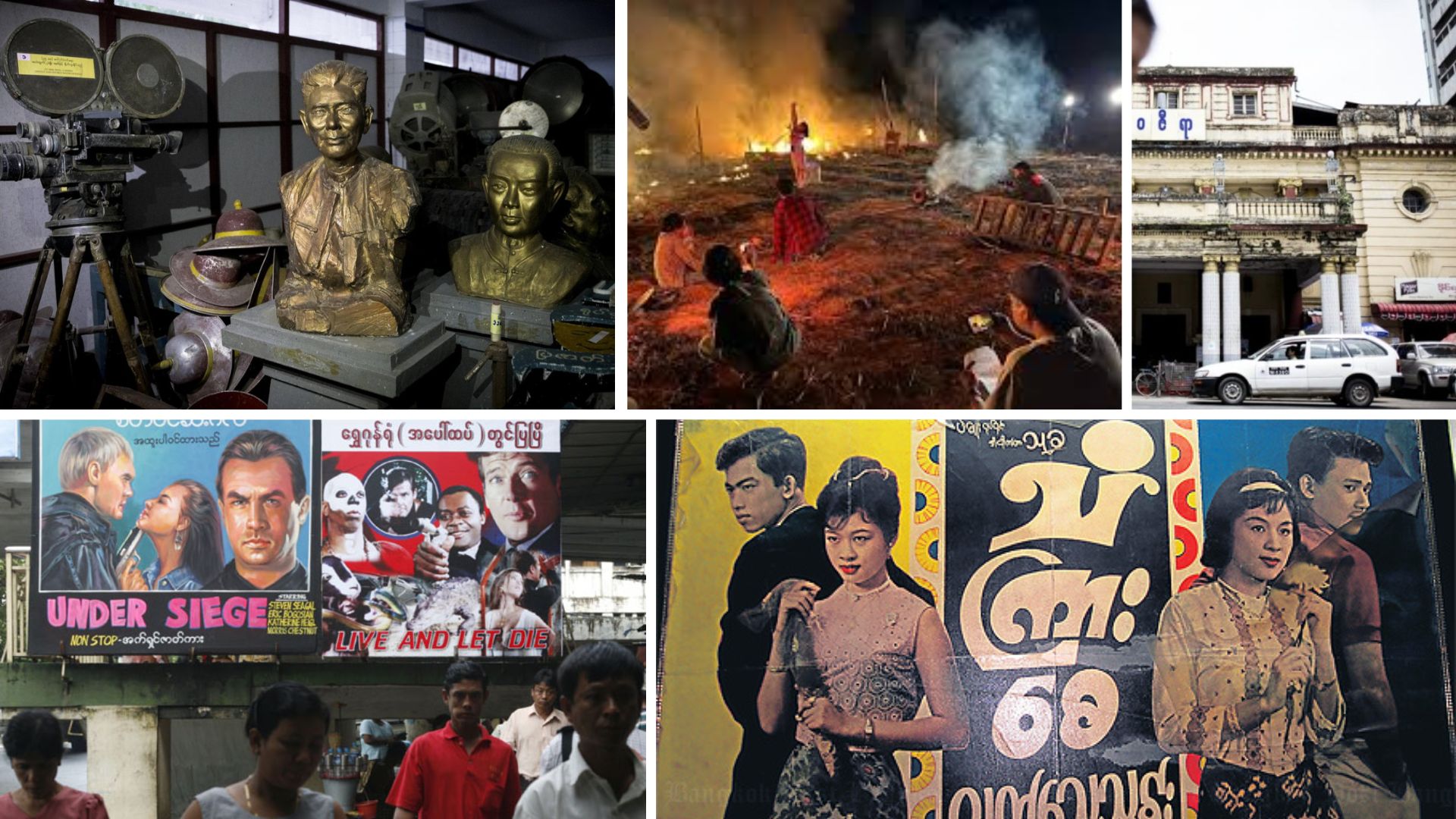Myanmar's culture is a blend of indigenous traditions and influences from neighboring countries
like India, China, and Thailand. Buddhism plays a central role, shaping daily life, festivals,
and architecture. Pagodas, monasteries, and Buddha statues are found throughout the country,
with the Shwedagon Pagoda being the most revered.
Traditional arts include dance, puppetry, and weaving, reflecting the country’s deep heritage.
The Burmese people value hospitality, respect, and community. Thanaka, a natural cosmetic paste,
and the longyi, a traditional garment, are cultural symbols. Festivals like Thingyan (Water
Festival) highlight Myanmar’s vibrant traditions, uniting people in joyful celebration

Myanmar Clothing
Traditional clothing in Myanmar is a reflection of its cultural heritage and diversity. The
longyi, a cylindrical wraparound skirt, is the most common attire for both men and women.
Men wear it with a taikpon (a collared shirt) or a simple white shirt, while women pair
theirs with a htamein, a more decorative, colorful version.
Myanmar’s textiles, often handwoven from silk or cotton, feature intricate patterns and vibrant
colors. The thingyan (Water Festival) and other religious ceremonies showcase traditional
attire with elaborate embroidery. The acheik, a unique wave-patterned silk design, is
particularly admired in formal wear.
Jewelry and floral hair decorations add elegance to women's outfits, while men often wear a
traditional gaung baung (headwrap) during special occasions. Though modern fashion is
popular, the longyi remains an everyday essential, symbolizing Myanmar’s deep-rooted traditions.
The blend of simplicity and elegance in Burmese clothing reflects the nation’s cultural pride.

Myanmar Food
Myanmar’s cuisine is a delightful blend of flavors influenced by Indian, Chinese, and Thai
traditions while maintaining its unique identity. Rice is the staple food, often served with a
variety of curries, vegetables, and soups. Mohinga, a rice noodle soup with fish broth, is
considered the national dish and is commonly eaten for breakfast.
Laphet thoke, or fermented tea leaf salad, is a popular dish known for its unique mix of
flavors—bitter, sour, and crunchy. Other favorites include ohn no khauk swe (coconut noodle
soup) and shan noodles, a specialty of the Shan ethnic group. Street food, such as skewered
meats, fried snacks, and samosas, is widely enjoyed.
Meals in Myanmar are typically served with an array of condiments like pickled vegetables, dried
chili, and fish sauce. The use of fresh herbs and spices gives Burmese food its distinct taste,
making it a flavorful and diverse culinary experience.

Myanmar Art
Myanmar’s art is deeply rooted in its Buddhist traditions, with a strong focus on spirituality
and devotion. Traditional Burmese painting often depicts religious scenes, such as Buddha's
life and teachings. Temples and pagodas are adorned with murals showcasing vibrant colors and
intricate details, reflecting the country's devotion to Buddhism.
Sculpture is another prominent form of art, with Myanmar's most famous works being the
numerous Buddha statues found across the country, ranging from small, delicate carvings to
enormous, majestic figures. These sculptures are often made of bronze, wood, or marble and are
revered for their craftsmanship and spiritual significance.
Lacquerware, an ancient craft, is also a hallmark of Myanmar's artistic heritage. Exquisite
boxes, trays, and other objects are hand-carved and coated with layers of lacquer, decorated
with detailed patterns. Burmese art continues to evolve, blending traditional forms with
contemporary styles, while still honoring its rich cultural heritage.

Myanmar Film Industry
The Myanmar film industry, often referred to as Myanmar Cinema, has a rich history dating
back to the 1920s. Early films were mostly influenced by Indian and Western cinema, but over
time, Myanmar developed its unique film culture. Burmese cinema is known for its focus on
family, social issues, and historical themes, often reflecting the country’s cultural and
political landscape.
Despite facing challenges under military rule, the industry has seen a resurgence in recent
years. Films are now produced in various genres, including drama, comedy, and action, with many
filmmakers drawing inspiration from the country’s traditions and folklore.
The Myanmar Motion Picture Organization (MMPO) governs the industry, and the country hosts
several film festivals, such as the Myanmar Film Festival, where filmmakers showcase their
work. Though Myanmar's film industry faces financial constraints and censorship, it continues to
grow, producing captivating narratives that resonate with both local and international
audiences.

Myanmar Economy
Myanmar's economy is largely based on agriculture, with rice, pulses, and oilseeds being the
primary exports. The country has vast natural resources, including oil, natural gas, timber, and
minerals, which play a key role in its economy. Agriculture employs a significant portion of the
population, particularly in rural areas.
Over the past few decades, Myanmar has seen gradual economic reforms, moving from a centrally
planned economy to a more market-oriented system. Foreign investment, particularly in sectors
like telecommunications, energy, and tourism, has increased, contributing to economic growth.
However, the economy remains challenged by political instability, poverty, and inadequate
infrastructure.
The trade sector also plays a crucial role, with Myanmar exporting goods to neighboring
countries such as China, Thailand, and India. Despite these challenges, Myanmar is rich in
economic potential, and its government is working toward improving the business environment,
creating jobs, and advancing industrial development.